Boot: 2023-2024 Fischer RC4 105 MV W BOA & Buckle
Stated Flex: 105
Available Sizes: 22.5-27.5
Stated Last (size 26.5): 100 mm
Stated Forward Lean: 16°
Size Tested: 24.5
Stated Boot Sole Length (size 24.5): 286 mm
Blister’s Measured Weight (BOA version, size 24.5):
- Shells, no Liners (left & right): 1324 & 1335 g
- Liners, no Footbeds: 349 g & 364 g
- Shells + Liners = 1673 & 1699 g
- Stock Insoles: 11 & 11 g
- Removable Spoilers: 29 & 28 g
Blister’s Measured Weight (buckle version, size 24.5):
- Shells, no Liners (left & right): 1408 & 1395 g
- Liners, no Footbeds: 358 g & 356 g
- Shells + Liners = 1766 & 1751 g
- Stock Insoles: 11 & 11 g
- Removable Spoilers: 28 & 28 g
Power Strap: 55 mm Phattmax velcro power strap
Shell Material (BOA version):
- Cuff: TPU
- Lower Shell / Shoe: Vacuum Plastic
Shell Material (buckle version):
- Cuff: TPU
- Lower Shell / Shoe: TPU
Liner: RC4 MV Performance WS (Women’s Selection)
Soles: GripWalk (ISO 23223); alpine soles (ISO 5355) available aftermarket
Binding Compatibility: GripWalk ISO 23223, MNC


Intro
For the 23/24 season, Fischer completely redesigned their RC4 boot lineup. The new collection features three different lasts available in several different flex patterns.
The overhaul of the lineup is intriguing, especially because Fischer opted to rework three different boots lasts / molds at the same time. Their RC4 LV replaces the former CURV GT and features a modified toe box and forefoot, with flaps over the instep for a more forgiving entry, as well as increasing the last from 96 mm to 98 mm. The RC4 HV (102 mm last) is an updated version of the RC ONE.
But the RC4 MV is certainly the biggest departure from prior boots. While it replaces The CURV (MV) boots, the new molds are reportedly based on data that Fischer has been able to collect via their Scan-Fit App that allowed them to design a medium-volume last intended to fit the broadest range of “medium-volume” feet.
To round out the line and add additional performance-oriented options, Fischer is also offering two new PRO models. More details on the entire RC4 series are listed below.
The updates that have caught the most attention are the addition of a BOA to some of their MV models, as well as the inclusion of a ZipFit liner in their RC4 PRO LV and RC4 PRO MV boots.
We have been spending quite a bit of time A/B testing the women-specific models, the RC4 MV 105 BOA VAC GW and their RC4 MV 105 GW. Check out the Flash Review to get an overview of some of our initial on-snow impressions.
Our other reviewers are also testing the RC4 Pro MV ZF BOA CFC (more on all those acronyms below…), which we’ll be discussing further in the future.
What Fischer Says about the RC4 105 MV BOA:
“RC4 105 MV is an outstanding performance boot that offers customizable VACUUM shell for ladies looking for a comfortable fit. New BOA® H+i1 system wraps the shell to every foot shape and the women’s specific iFZ Performance liner to guarantee top performance at a playful 105 flex. The RC4 MV boots have developed with help of FISCHER Scan-Fit® data, providing an optimal fit for most female skiers.”
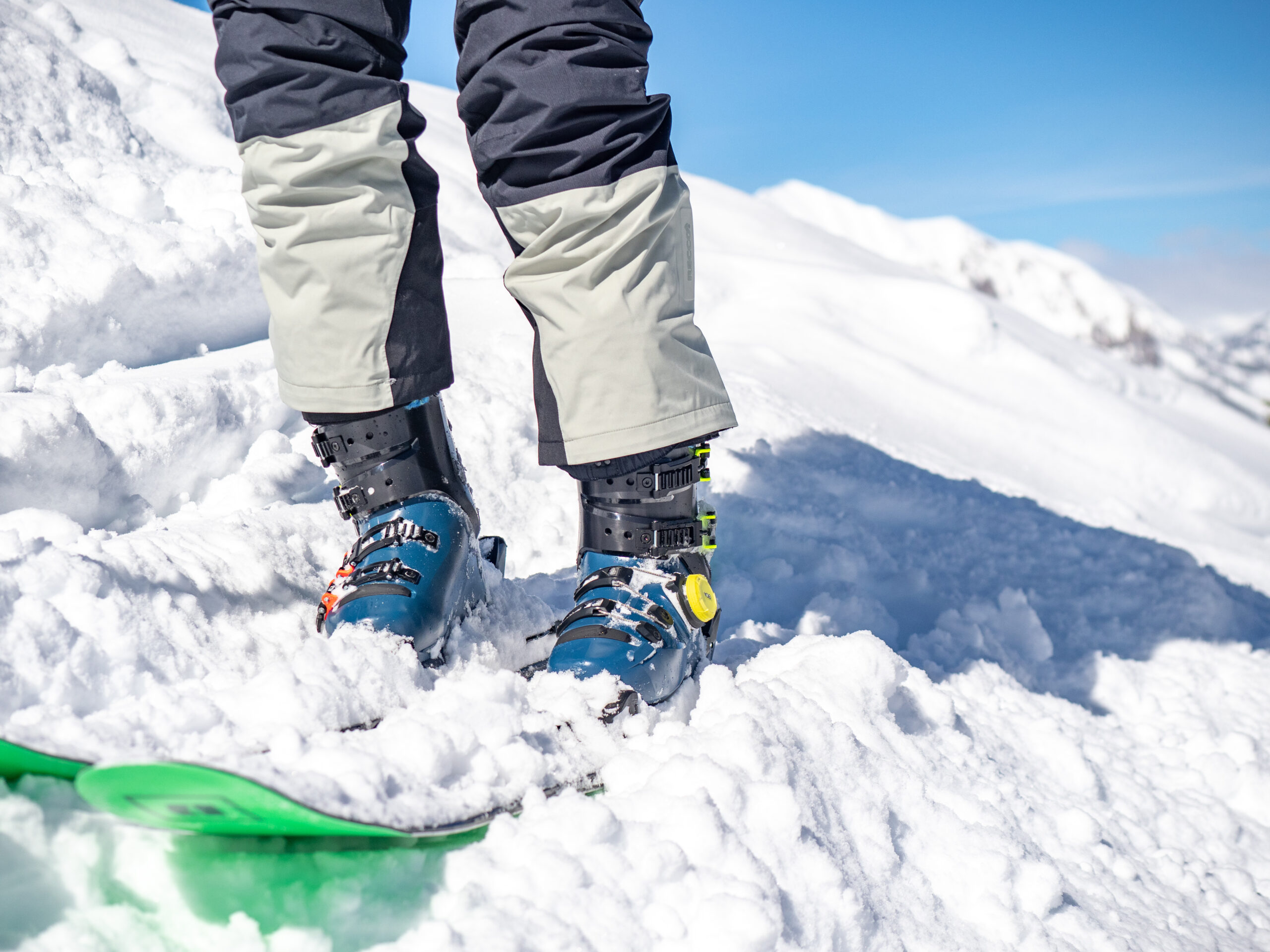
The RC4 Series
The 23/24 series consists of the RC4 LV (98 mm last), RC4 MV (100 mm), and RC4 HV (102 mm).
Their naming schemes are pretty acronym-heavy, so here is a breakdown of the abbreviations you will find, which can help you delineate models in Fischer’s RC4 lineup:
- ZF: ZipFit liner included (PRO model only)
- VAC: Features Fischer’s Vacuum-moldable plastic
- GW: GripWalk soles
- CFC: Carbon-Fused Cuff (PRO model only)
- BOA: Includes BOA Fit System
And here’s a summary of the 2023-2024 Fischer RC4 boots:
RC4 LV (~98 mm last):
- RC4 PRO LV ZF CFC GW
- RC4 130 LV – VAC GW
- RC4 120 LV – VAC GW
- RC4 105 LV VAC GW
- RC4 95 LV VAC GW
RC4 MV (~100 mm last):
- RC4 PRO MV ZF BOA CFC GW
- RC4 130 MV BOA VAC GW
- RC4 120 MV BOA VAC GW
- RC4 110 MV VAC GW
- RC4 105 MV BOA VAC GW
- RC4 105 MV GW
- RC4 95 MV VAC GW
RC4 HV (~102 mm last):
- RC4 130 HC VAC GW
- RC4 120 HV VAC GW
- RC4 100 HV VAC GW
- RC4 95 HV VAC GW
- RC4 90 HV GW
- RC4 85 HV GW
Shell
All of Fischer’s RC4 boots are traditional two-piece overlap boots. Integrated into most of the models is Fischer’s long-standing Vacuum plastic construction, which allows for their proprietary method of heat molding. Fischer lists the following benefits of Vacuum plastic: thermoformable with the ability to increase or decrease volume by – / + 3 mm (the only heat molding process capable of tightening the fit); 15% lighter than standard PU; better damping; and more temperature stability.
The RC4 MV BOA boots are built with a Vacuum plastic lower shell and a TPU shell, whereas the RC4 105 MV GW buckle version is full TPU (cuff and lower shell).
Liner
The RC4 105 MV BOA VAC GW and RC4 105 MV GW come with Fischer’s RC4 MV Performance (WS) liner. The Performance liner indicates that it utilizes Fischer’s densest foam and material, a flexible toe-box, and that volume can be added by utilizing Fischer’s Padding Velcro System (stocked at some bootfitting shops).
This is a women-specific liner, which in this case, means that there is the addition of Primaloft insulation and a unique cut in the liner collar to help match (some) female lower-leg anatomy. In all, this is a pretty dense and robust stock liner. While I have only skied the stock liner briefly (look at the Fit section for more explanation as to why), it offered a pretty secure out-of-the-box fit. The Performance Liners can be thermo-molded if needed, but don’t require it.
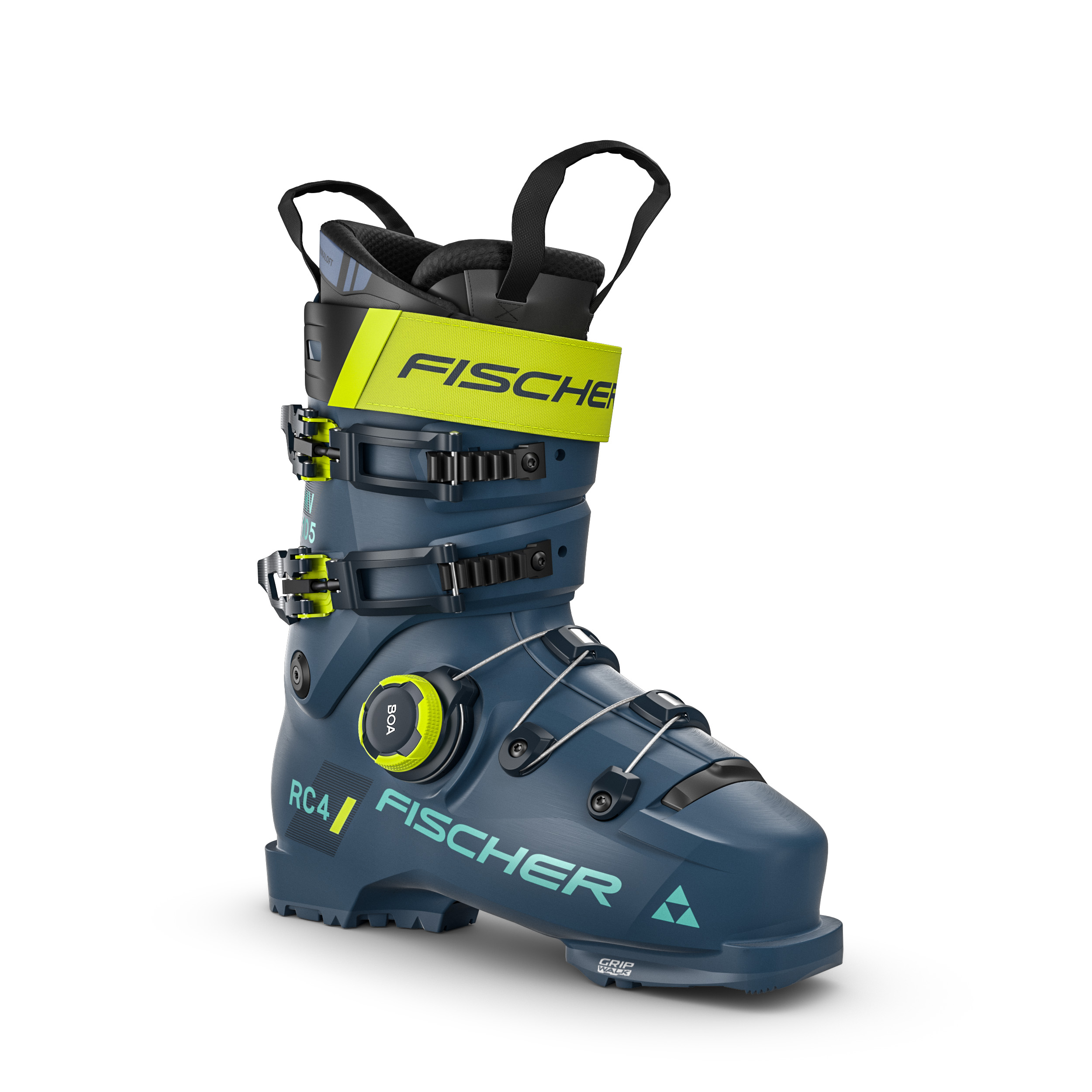

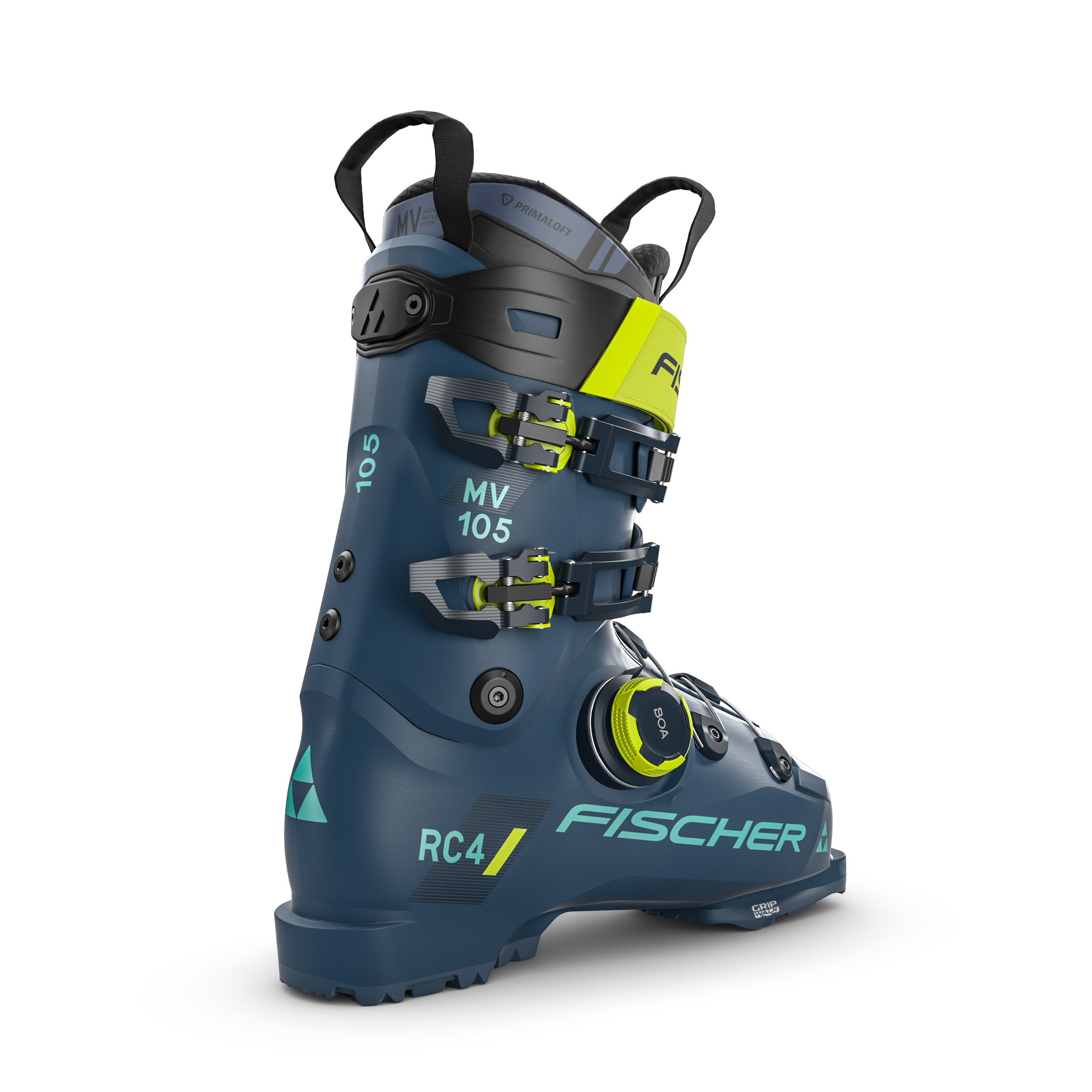
Weight & Comparisons
The Fischer RC4 105 MV BOA VAC GW is slightly less than ~100 g lighter than its buckle-version, which is noteworthy, given that a lot of the new BOA boots that are rolling out from other companies are slightly heavier than their traditionally buckled counterparts. However, it is important to note the plastic composition is different between these two boots, and the BOA version is built with Fischer’s Vacuum plastic, which is stated to be 15% lighter than full TPU boots. So, while this looks significant in terms of the BOA reducing weight, it seems more attributable to the differences in plastics than the closure mechanisms on the lower boot.
In terms of weight, both of these RC4 MV models sit around the middle or slightly lighter side of their class, in the women-specific alpine boot category; there are alpine touring boots listed below with heavier weights than either of these alpine boots.
For reference, here are a number of manufacturers’ stated weights (per boot) and our measured weights for some comparable boots. For our measured weights, we list the weights of each shell + the weights of each liner, then the total weights of the shells + liners.
22/23 Atomic Hawx Ultra 115 W S (24.5) 1621 g (stated weight)
22/23 Tecnica Cochise Pro W (24.5): 1285 & 1289 + 343 & 330 = 1628 & 1619 g
23/24 Fischer RC4 105 MV BOA VAC GW (24.5) 1324 & 1355 + 349 & 364 = 1673 & 1699
22/23 Nordica Speedmachine 3 115 W (24.5) 1700 g (stated weight)
22/23 Rossignol Pure Elite 120 (24.5) 1387 & 1380 + 323 & 324 = 1710 & 1704 g
23/24 Tecnica Mach1 LV 115 W (24.5) 1347 & 1348 + 350 & 352 = 1716 & 1738 g
23/24 Fischer RC4 105 MV GW (24.5) 1408 & 1395 + 358 + 359 = 1766 & 1751
23/24 Lange Shadow 115 LV W (24.5) 1426 & 1428 + 341 & 343 = 1767 & 1771
23/24 S/PRO Supra BOA 105 W (25.5) 1384 & 1385 + 375 & 375 = 1771 & 1772 g
22/23 Head Kore 105 W (24.5): 1372 & 1373 + 407 & 405 = 1779 & 1778 g
23/24 K2 Mindbender 115W BOA (24.5) 1462 & 1456 + 375 & 377 = 1857 & 1857 g
22/23 Nordica Promachine 115 W (26.5) 1860 g (stated weight)
22/23 Lange RX 110 LV (24.5): 1876 g (stated weight)
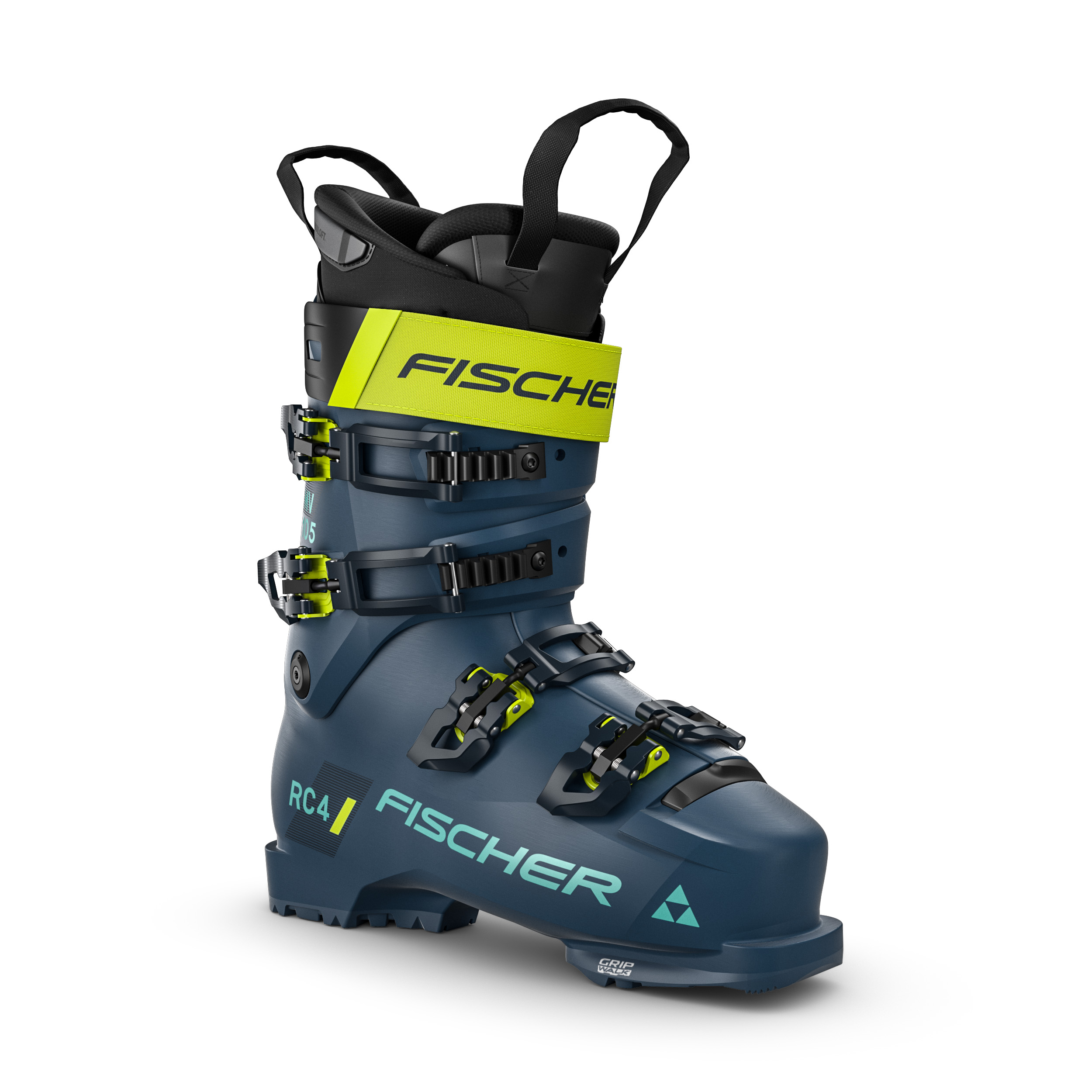

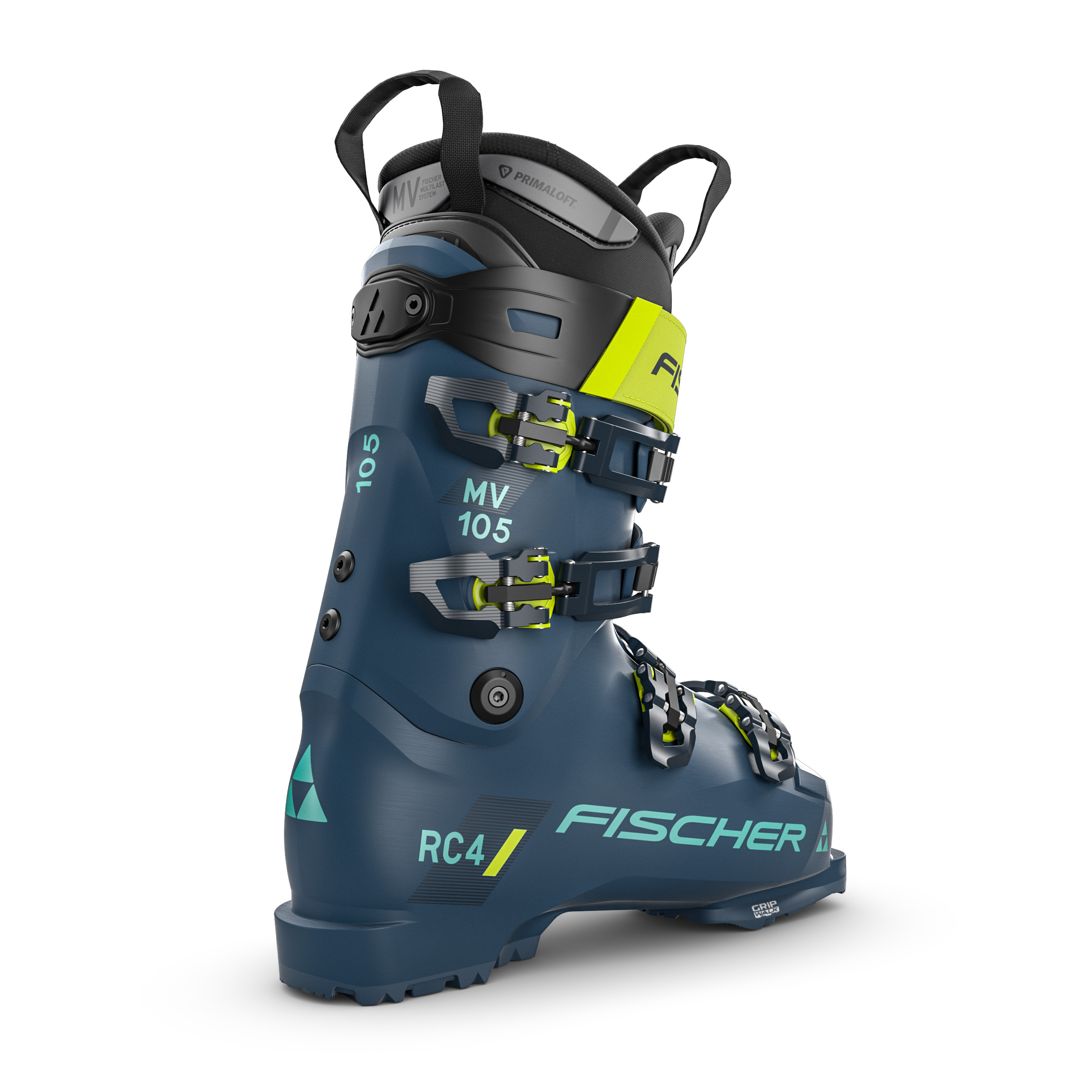
Fit
As always, sitting down with a trusted bootfitter who can both take the time to measure your foot in several different ways and assess your biomechanics to find out which boot will work best for you is the best move. My feet are not your feet (probably lucky for you). I spent over a decade as a bootfitter, so I prioritize fit above all else, and I can also speak to all the notions of how a boot should fit, why lower buckles aren’t important when achieving a snug fit, etc. Given this, I was a bit skeptical about the advent of BOA, but I was able to go into this process with a broad perspective.
I have a fairly narrow, low-volume foot. Weighted and unsupported, I measure 25.5 cm in length, with a 24.5 cm instep measurement. I also have an extremely rigid foot and altogether very rigid biomechanics. Plus, I am suffering some end-of-season foot woes. So, all this means I rely on some ramp angle adjustment (5° or so); my very cushy custom insole; and as of lately, I am more reliant than ever on my ZipFit Gara liners to lock my heel down to prevent any excess movement.
So, what’s going on with these RC4 MV boots? First of all, I haven’t really skied a “medium-volume” boot that much. While I have spent around 100 ski days in the Tecnica Cochise Pro, which is classified as a ~99 mm last, I mostly stick to low-volume lasts. That said, I was a little tentative to ski a “MV” boot, but when Cristoph Lentz (Fischer’s Boot Product Manager) handed me the RC4 MV boots at Blister Summit 2023, I couldn’t refuse, and I really wanted to try a BOA boot.
So first, I will speak to the RC4 105 MV BOA VAC GW. While this is a medium-volume boot, particularly in the forefoot, toe box, and over the instep, I have found that the key fit zone (heel to instep) has worked well for my foot. In many ways, it feels somewhat similar to the Tecnica Cochise Pro that I have spent many days in.
Without much effort, I can achieve a very snug and secure fit through the heel pocket, cuff, and instep of the RC4 MV. The fit through the cuff is quite uniform with evenly dispersed pressure.
Is the lower shell roomy on my midfoot, forefoot, and toes? Definitely. Length-wise, it’s totally perfect, and the most integral parts of the fit have been pretty secure.
So, in comes the BOA. I realize I am using the BOA Fit System to a degree that’s greater than I would likely recommend as a bootfitter, since I am using it to really cinch the lower boot snug and secure around my foot. But as I do this, I am able to achieve a highly uniform and evenly snug fit, which is exactly what I am looking for. The ability to modify this fit with very small degrees of adjustment, and to do so in a way that is extremely uniform throughout the lower boot has had serious fit benefits, so far.
I think that, in an ideal world, the LV version of the RC4 would work best for me (no BOA on that last, yet). But the degree to which the BOA system provides a very uniform and secure fit in the lower boot has been impressive. I am also interested in the prospect of Vacuum molding this boot, to see if I can achieve an even more secure and snug fit.
To contrast this to the buckle version, the fit feels mostly the same, prior to buckling the lower buckles. But when I go to secure my foot via the lower (standard) buckles, it definitely creates an onslaught of pressure points that I don’t have in the BOA version, namely on top of my instep, at my 6th toe, and top of my forefoot.
While I understand that a well-fit ski boot shouldn’t require over-tightening the lower boot in order to achieve a secure fit, the fact that I have been able to test the more extreme use of a BOA closure and find some promising results in regard to fit has shown me what BOA can potentially offer in terms of tightening the lower boot; this is also why this might be a better option for circulation, uniform pressure, and all those good things we want from a ski boot. I wouldn’t necessarily choose the RC4 in an MV last for myself, but I can attest to the fact that the BOA system has provided a more uniform fit than the buckle-version.
Bottom Line (For Now)
So far, I have really been enjoying the way the RC4 MV 105 BOA and buckled RC4 MV 105 have been skiing, in regard to their on-snow feel. While the MV fit might not be totally ideal for my particular feet, my first BOA experience has been quite intriguing and I have been fortunate to test side-by-side a BOA vs. buckle version of nearly the same exact boot. And because the fit isn’t unreasonable, I will continue to spend quite a bit of time in both of these boots.
If you want to hear more about how these two boots have been skiing in terms of performance and on-snow feel, or what happened when I clocked the BOA mechanism directly into a tree while carrying plenty of speed, check out our Flash Review.
Flash Review
Blister Members can read our Flash Review of the RC4 105 MV BOA and RC4 105 MV GW for our initial on-snow impressions. Become a Blister member now to check out this and all of our Flash Reviews, plus get exclusive deals and discounts (including 10-20% off skis from 10+ brands), and personalized gear recommendations from us.


With my zipfits I use the laces, so I need to put my liners on first, lace up, and then I slip foot + liner into the shell. Reversed order at the end of the day: pull foot + liner out of the shell then take liners off. Do the BOA shells open enough for this procedure? Seems like with a permanently wire-laced lower shell, it would be tricky to open the boot enough to slip both foot and liner in at the same time.
Hi Shawn,
Good question. I was also curious about this because I also use this “World Cup entry” technique with my ZipFits. So far, it has been easy to use this technique with the BOA boots. The BOA loosens enough to create plenty of space to get your foot / liner inside. The BOA also helps to keep the two overlapping plastics of the shell, the liner, and the rubber water seal more aligned and in place when entering, and it seems like the tongue of my ZipFit is less prone to getting caught on the shell when entering. This might be specific to the plastic on the RC4, but so far, so good.
Any idea when Fischer will out Boa on LV models?
Good review.
Ive typically been in a lv boot also. Fav has been a 2012 doberman race boot with a head world cup foam liner. But I realize boots have come along way, and my feet have changed ( injury ). My last is measuring around 100 on the my scan fisher app. So I think the Mv with the boa will be the ticket. Just hard to find them In whistler BC, cant just walk into can ski / sure foot and find them.